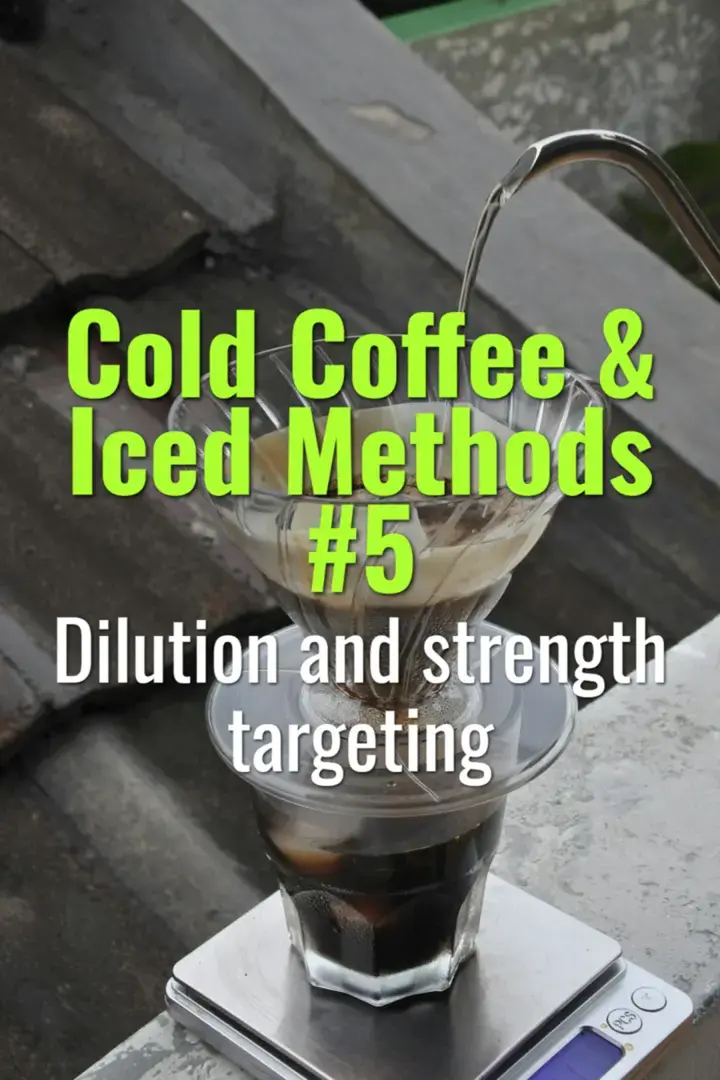Dilution and strength targeting
How to control strength in cold coffee by managing brew concentration and dilution, ensuring balance and consistency.
- Coffee Basics Nerds
- 2 min read
Article 5 of 12 in Cold Coffee & Iced Methods/

Why Dilution Matters
- Cold brew is often brewed as a concentrate.
- Concentrates are too strong to drink directly but allow flexible serving sizes.
- Proper dilution ensures consistent taste, sweetness, and caffeine balance.
Strength Measurement
- TDS (Total Dissolved Solids):
- Typical ready-to-drink cold coffee: 1.2–1.8% TDS (similar to hot filter coffee).
- Concentrates: 3–6% TDS.
- Extraction Yield (EY):
- Balanced range ~18–22%, even in cold methods.
Dilution Ratios
- Common Concentrate Ratio: 1:4 to 1:6 (coffee : water).
- Ready-to-Drink: Dilute concentrate 1:1 or 1:2 with water, milk, or ice.
- Japanese Flash Brew: Already brewed with dilution in mind (ice replaces part of water).
Flavor Balance
- Too little dilution → heavy, syrupy, bitter.
- Too much dilution → watery, weak, flat.
- Proper targeting creates refreshing, sweet, and balanced cold coffee.
Practical Workflow
- Brew a cold concentrate with a known recipe.
- Measure TDS with refractometer or use weight-based dilution.
- Dilute to target TDS (~1.4% for balance).
- Record recipes for repeatability.
Service Options
- Dilute with still water for clean flavor.
- Use sparkling water for effervescent cold coffee spritz.
- Add milk or alt-milk for creamy cold lattes.
- Adjust ice volume to account for melting dilution.
Summary
Dilution is the bridge between strong cold brew concentrate and balanced ready-to-drink coffee. By measuring TDS, applying consistent ratios, and accounting for ice melt, baristas can deliver repeatable strength and flavor in every cold coffee service.